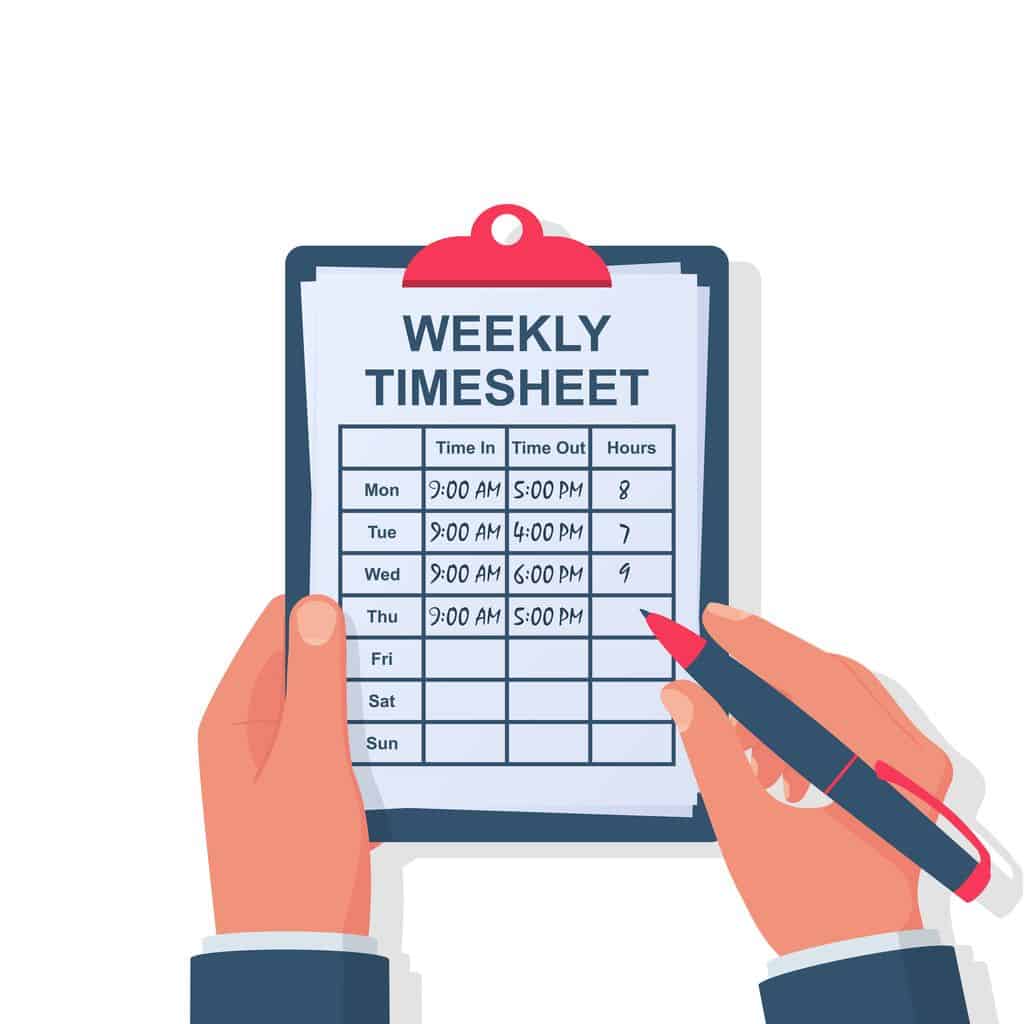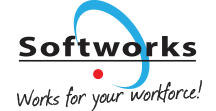Let’s explore a critical aspect of hospital management – the management of employee attendance and time. Hospitals operate round-the-clock, requiring an optimal number of staff, including doctors, nurses, and support personnel, at all times. The average Hospital in the United States has 997 personnel. Accurate tracking ensures that the hospital functions smoothly and that patient care isn’t compromised.
This isn’t an easy task. Hospitals face several challenges in managing their workforce’s time and attendance. Coordinating schedules across various shifts and departments, ensuring compliance with labor laws, and balancing workloads to avoid overworking staff are just a few of the complexities involved. Add to this the unpredictability of sudden staff shortages or an influx of patients, and you can see why effective management of employee time is both crucial and challenging.
The Evolution of Employee Attendance Tracking and Management in Healthcare

How did hospitals keep track of who was clocking in and out? It’s fascinating to see how things have evolved!
Attendance tracking in hospitals was straightforward but not efficient. We’re talking about the old-school punch clocks and paper timesheets. Nurses, doctors, and auxiliary staff would punch in and out, and then administrators would be tasked with manually going through these records and reporting to payroll. If there was a query then it could take weeks if not months to resolve by manually searching through boxes of time cards. Imagine the time and effort that took, especially in large hospitals!
As technology advanced, so did attendance management methods. Hospitals began to shift from these manual methods to more sophisticated, digital systems. This change was a game-changer! Suddenly, with computers and later, software systems, managing attendance became quicker, more accurate, and less of a headache. No more piles of paper or hours spent tallying up timesheets.
This transition to digital systems wasn’t just about convenience; it was necessary. As hospitals grew and healthcare became more complex, the need for a reliable and efficient way to manage staff time became critical. With digital systems, hospitals could now easily handle staff scheduling, monitor overtime, and ensure compliance with labor laws – all with a few clicks.
The journey from punch cards to digital timekeeping mirrors the broader technological advancements in healthcare.
Current Challenges in Hospital Employee Attendance Management
Managing employee attendance in hospitals is more than just tracking who’s in or out. It’s a complex puzzle with many moving parts. Hospitals face several challenges in this area, each impacting how the hospital functions and the quality of care patients receive.

- Shift Scheduling: In hospitals, balancing patient needs with staff availability and specializations is key. It’s vital to ensure staff are not overburdened, as this affects morale and can lead to burnout, impacting patient care. Advanced Scheduling Software can help optimize shift distribution, and regular staff feedback sessions can identify and address scheduling issues, ensuring a healthy work-life balance for staff and consistent patient care.
- Compliance with Labor Laws: Navigating the complex labor laws related to working hours, overtime, and mandatory breaks is crucial for hospitals to avoid legal issues. Regular training for management on these laws and the establishment of a compliance committee can ensure adherence to regulations, maintaining a safe and legal working environment, and safeguarding the hospital’s reputation. As staffing laws are becoming more prominent in the US states like IOWA and California it’s looking more and more likely that we will see a federal law come into play.
- Handling Absenteeism: Dealing with unexpected staff absences requires quick and efficient solutions to ensure uninterrupted patient care. By creating a pool of reserve staff and developing transparent policies for reporting absences, hospitals can effectively manage sudden shortages, maintain continuity in patient care, and address any underlying staff health or morale issues. We’ve found that by allowing personnel access to a Self-service App then managers can be made aware of absences as they arise and also send out notifications to staff who have availability to pick up extra shifts and close that gap.
- Balancing Cost and Care Quality: Hospitals often grapple with the challenge of managing labor costs while maintaining high-quality patient care. Periodic assessments to align staffing with patient care needs, coupled with investments in staff training and development, can lead to more efficient operations. This approach not only controls costs but also ensures high standards of patient care. In a recent ROI study, Softworks determined that inputting Time and Attendance systems can save upwards of $2.6m – and that’s a conservative number!
- Adapting to Technological Changes: Integrating new time management technologies requires careful planning to minimize disruptions in hospital operations. Offering comprehensive training for staff and involving them in the technology selection and implementation process can ensure these systems are effectively integrated into existing workflows, enhancing overall efficiency and functionality.
These challenges in hospital attendance management are intricate and require a thoughtful and balanced approach. Successfully navigating these issues is crucial for the smooth running of hospitals, ensuring they remain efficient and effective in delivering top-notch patient care.
How Hospitals can move forward with more Advanced Employee Attendance Tracking Solutions
Hospitals are adopting advanced technologies for employee attendance tracking, with systems like those offered by Softworks playing a pivotal role. These systems use various methods such as biometric and mobile app-based solutions to streamline attendance tracking.
Overview of latest technologies:
- Biometric Systems: Hospitals are increasingly adopting biometric systems for employee attendance tracking. Softworks, for instance, offers a biometric face recognition system that includes fever detection. This technology not only enhances the accuracy of attendance tracking but also adds a layer of health monitoring, which is particularly relevant in the healthcare environment.
- RFID and Proximity Time Clocks: These systems simplify the process of recording attendance by using proximity cards or key fobs. This method is efficient and reduces the need for physical contact, which is an important consideration in a healthcare setting.
- Desktop and Mobile Clocking: Softworks provides options for employees to clock in and out via desktop or a mobile app. More often than not healthcare settings will be on-site. However, providing mobile flexibility allows employees to work without being tethered to a desktop computer.
- Real-Time Data and Reporting: The ability to access real-time attendance data is essential for effective workforce management. Softworks’ system offers this capability, providing hospital administrators with immediate insights into staffing levels and attendance patterns.
- Integration with Payroll and HR Systems: Softworks’ attendance tracking system seamlessly integrates with payroll and HR systems. This integration streamlines administrative processes by automating the transfer of attendance data into payroll, ensuring accurate and timely payment for employees. It also facilitates efficient HR management by providing real-time attendance data, aiding in compliance with labor laws, and reducing the administrative burden associated with manual data entry.
- Integration with Patient Acuity Systems: Softworks’ system extends its capabilities to integrate with Patient Acuity systems. This integration empowers hospitals to make staffing decisions based on patient care requirements. By aligning staff schedules with patient acuity levels, hospitals can ensure that they have the right personnel with the appropriate skills available when needed.
- Regulatory Compliance: Ensuring compliance with labor laws and regulations is a critical aspect of hospital management. Advanced attendance tracking systems help in maintaining compliance, thereby safeguarding the hospital against potential legal challenges.
By adopting these advanced technologies, hospitals can enhance the efficiency of their attendance management systems. This leads to improved operational effectiveness, ensuring that staff time is managed accurately and in compliance with relevant laws and regulations, ultimately contributing to the overall quality of patient care.
Case Studies: Success Stories in Hospitals
Let’s explore real-world case studies where hospitals have effectively implemented advanced time and attendance management systems by Softworks. These examples showcase the tangible benefits these systems bring, from streamlining staff scheduling to enhancing overall operational efficiency and, ultimately, improving patient care.

- Beaumont Hospital, Ireland: After implementing the Softworks eRostering package, Beaumont Hospital observed a marked improvement in staff scheduling. The system streamlined the process of managing various shifts, ensuring that the right personnel were available at the right time. It resulted in not only better workforce utilization but also allowed for more focused patient care, leading to an overall enhancement in hospital service quality.
- Bon Secours Health System: The adoption of a new time and attendance system led to more efficient and accurate rostering. The system enabled them to manage staff time more effectively, reducing the chances of over or understaffing. The improved rostering control also meant better compliance with working hours regulations, which contributed to enhanced staff satisfaction and work-life balance.
- Newbrook Nursing Homes: Implementing the advanced attendance system allowed Newbrook Nursing Homes to manage operations across multiple sites more efficiently. The system streamlined the tracking of employee hours, reducing the administrative burden and facilitating scalability. This meant that as they expanded, they could add more employees without a proportionate increase in HR and payroll resources, thereby optimizing their growth strategy.
These examples demonstrate how investing in sophisticated time and attendance management systems can bring about substantial improvements in hospital operations, leading to better patient care and more efficient use of resources. For more detailed information, you can visit Softworks’ Case Studies page.
Conclusion
Effective management of time and attendance in hospitals is paramount for ensuring the delivery of quality patient care. The adoption of advanced attendance tracking systems, such as those offered by Softworks, has emerged as a game-changer in this regard. These systems, with their biometric precision, seamless integrations, and forward-thinking features, empower hospitals to efficiently manage their workforce, remain compliant with labor laws, and optimize staffing levels.
Furthermore, the potential for future innovations, including AI-driven scheduling and enhanced data analytics, promises to further revolutionize attendance management in healthcare settings. The integration of these technologies into the healthcare landscape is set to create a more efficient, data-driven, and patient-centric environment.
Hospitals that have embraced these advancements have reaped the rewards of improved operational efficiency, reduced administrative burdens, and ultimately, better patient outcomes. The successful implementation of advanced time and attendance management systems underscores their crucial role in modern healthcare. It is clear that by leveraging these solutions, hospitals can continue to strive for excellence in patient care while ensuring the well-being of their valuable workforce.
Request a free Demo!
Take the first step towards a complete workforce management solution. Talk to us today!
About Tomislav Rucevic
Tomislav Rucevic, an SEO Specialist at Softworks, stands out as more than just a marketer. He’s a fervent writer and influential thinker passionate about Workforce Management, HR, and work-life dynamics. Holding an MBA in Marketing, Tomislav excels in creating content that delves into the complexities of the modern workplace.
His dedication to writing on these topics is highlighted in his MBA thesis, which examined the link between Employee Motivation and Quality Improvement. At Softworks, he expertly merges his SEO skills with his writing prowess, contributing to the company’s digital success and advancing discussions on enhancing work environments and achieving work-life balance.










I found the article on employee attendance management really insightful! It’s crucial for hospitals to streamline their processes to improve staff satisfaction and compliance. Thanks for sharing these solutions!